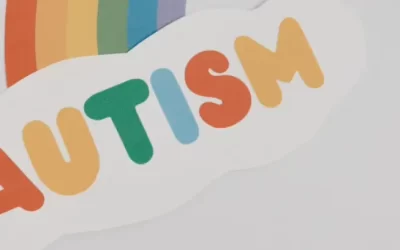
What Is Autism Spectrum Disorder?
Additionally, it is a developmental disorder in that symptoms arise early in one’s life and often remain throughout one’s lifetime. While autism requires support, it also provides a wealth of unique strengths and perspectives that enrich our understanding and appreciation of diverse human experiences.
Individuals from any gender, race, ethnicity, or socioeconomic status can be diagnosed with autism. While ASD is often a lifelong condition, various treatments and services are available that can help alleviate symptoms and enhance daily life. The American Academy of Pediatrics advises that all children undergo autism screening. Parents and caregivers are encouraged to discuss the possibility of ASD screening or evaluation with their child’s healthcare provider.
Signs and Symptoms of Autism Spectrum Disorder
Autism is a developmental disorder with symptoms arising in early childhood, often by age 2. Symptoms are classified in the DSM-V and must show:
Difficulty in communication (primarily nonverbal)
- Making little or no eye contact
- Not responding to one’s name
- Not looking at people who are talking
- A mismatch between facial expressions or body movements and what is being said
- Having difficulty with the back and forth of a conversation
- Difficulty adjusting behavior to social situations
- Having an unusual tone of voice that may be flat or robotic
- Having trouble understanding another’s point of view
- Difficulty sharing in imaginative play
Repetitive behaviors and restricted interests
- Repeating certain words or phrases
- Intense and lasting interest in focused subjects
- Hyper- or hypo-sensitivity to intense lights and sounds
- Becoming upset by slight changes in a routine or transitions
Symptoms that impair their ability to function in school, work, or other life skills.
- Individuals may experience sleep problems and irritability.
Individuals on the autism spectrum may have many strengths, including
- Being able to learn things in detail and remember information for long periods
- Being strong visual and auditory learners
- Excelling in math, science, music, or art
- Being very honest and trustworthy in relationships
- Being very loyal and reliable in relationships
What are the Causes and Risk Factors for ASD?
Autism’s development is heavily influenced by genetics, with numerous studies indicating the condition is primarily hereditary. This genetic predisposition means that families with a history of autism are more likely to see it manifest in future generations. While the genetic component is dominant, environmental factors, particularly prenatal ones, can also play a minor role.
Some factors that are associated with an increased likelihood of developing ASD include:
- Having a sibling with ASD
- Having older parents
- Having certain genetic conditions (such as Down syndrome or Fragile X Syndrome)
- Having a very low birth weight
- Oxygen deprivation during birth
Not everyone who has these risk factors develop ASD, and despite the strong genetic basis, family history does not necessarily determine the presence of autism in an individual. However, it significantly influences the decision to pursue early screening and intervention. Knowing that autism runs in the family can be a crucial part of getting timely diagnosis and support for children with autism.
Autism Spectrum Disorders – Articles & Info
What Is the In-Person Assessment Process Like for Autism?
These assessments allow professionals to observe your child in various settings, interact with them directly, and use comprehensive evaluations to assess the severity and nature of their condition, if present.
What Are the Different Types of Autism
For parents, educators, and individuals seeking clarity, it’s crucial to recognize the diverse forms of autism and how they manifest.
Unpacking Gender Disparities in Autism Diagnoses
This gender disparity in autism diagnosis is contested, and it is not clear whether it occurs because autism is more prevalent in males or if there is significant underdiagnosis in females.
Family History’s Role in Autism Development
Knowledge of family history is crucial in recognizing the early signs of Autism, which helps guide timely interventions that can significantly improve the quality of life for the child.
But I don’t want my child to have Autism…
When we give parents the diagnosis of autism spectrum disorder, I have heard many questions and responses from parents, but I have never once heard a parent reply, “But I don’t want my child to have autism.”
Exploring Autism: Understanding Its Diverse Types
The understanding of autism has evolved significantly in recent years, leading to the current classification as a spectrum disorder rather than as separate conditions such as Asperger Syndrome or PDD-NOS.
Understanding the Autism Diagnosis Process
The process of diagnosing autism is multifaceted, involving a series of observations, evaluations, and professional consultations to accurately identify the presence of autism.
Is Autism Different in Kids vs. Adults?
This article will delve into the key differences between autism in children and adults highlighting the evolving nature of ASD.
Is OCD Neurodivergent?
Understanding Autism is a journey that starts with awareness. The disorder presents a spectrum of traits and strengths, and understanding early signs allows us to provide the best support for children and young adults with ASD.
Early Signs of Autism Spectrum Disorder
Understanding Autism is a journey that starts with awareness. The disorder presents a spectrum of traits and strengths, and understanding early signs allows us to provide the best support for children and young adults with ASD.
10 Warning Signs of a Bad Autism Evaluation
Autism rates through out the U.S. have been climbing steadily within the last 20 years. One possible explanation is that there is a greater attention to detection of autism at an earlier age.
Do You or Your Child Possibly Have an Undiagnosed Learning Disability?
Do you, or possibly your child, struggle with tasks you think should be easy to accomplish? There are several causes of this, including lifestyle issues and attentional problems. However, it’s also important to know that undiagnosed learning disabilities are also a potential cause.
Need Additional Information About ASD?
The following are recommended, reputable sources:
Understanding the Autism Diagnostic Process
Health care providers diagnose ASD by evaluating a person’s behavior and development. ASD can usually be reliably diagnosed by the age of 2. It is important to seek an evaluation as soon as possible. The earlier ASD is diagnosed, the sooner treatments and services can begin.
Diagnosis in Young Children
Diagnosis in young children is often a two-stage process
Stage 1: General Developmental Screening During Well-Child Checkups
National guidelines recommend autism screenings at 9, 18, 24, and 30 months during routine pediatric checkups to detect early developmental delays. The initial screening involves short evaluations of social, communication, and behavior skills, which are crucial for early identification but do not provide a definitive diagnosis.
Considering caregivers’ experiences and concerns is a crucial part of the screening process for young children. The health care provider may ask questions about the child’s behavior and use answers alongside ASD screening tools and clinical observation of the child.
Stage 2: Additional Diagnostic Evaluation
Children who show potential signs of ASD or have a family history of the condition may be recommended for further diagnostics. The next steps involve assessments by a multidisciplinary team of child specialists who perform several tests alongside family observations to determine the presence and severity of ASD.
The diagnostic evaluation is likely to include:
- Medical and neurological examinations
- Assessment of the child’s cognitive abilities
- Assessment of the child’s speech and language abilities
- Observation of the child’s behavior
- An in-depth conversation with the child’s caregivers about the child’s behavior and development
- Assessment of age-appropriate skills
- Questions about the child’s family history
After the diagnosis, the level of support required is determined, with recommendations for achieving that level of support through psychotherapy or other means.
Diagnosis in Older Children and Adolescents
Caregivers and teachers are often the first to notice symptoms of ASD in older children and adolescents who attend school. The school’s special education team might conduct an initial assessment and then suggest further evaluation by the child’s primary health care provider or a specialist in ASD.
Caregivers might discuss with healthcare providers the child’s social challenges, such as difficulties with subtle communication. These subtle differences can include having trouble understanding tone of voice, facial expressions, or body language. Older children and adolescents might also struggle with understanding figures of speech, humor, or sarcasm, and they may find it difficult to form relationships with their peers.
Diagnosis in Adults
Diagnosing ASD in adults is often more difficult than in children because some ASD symptoms can overlap with symptoms of other mental health disorders, such as an anxiety disorder or ADHD.
Adults who notice signs and symptoms of ASD should talk with a health care provider and ask for a referral for an ASD evaluation, which can be with a neuropsychologist, psychologist, or psychiatrist who has experience with ASD. This evaluation will include questions about:
- Social interaction and communication challenges
- Sensory issues
- Repetitive behaviors
- Restricted interests
This evaluation may also include conversations with caregivers and other family members to learn about the person’s early developmental history, which helps ensure an accurate diagnosis.
Getting an accurate diagnosis of ASD as an adult can be immensely beneficial. It helps individuals understand their past difficulties, recognize their personal strengths, and seek appropriate support. Current studies are focusing on identifying the most effective services and supports to enhance the functioning and community integration of autistic youth transitioning to adulthood.
How Is Autism Different in Kids vs. Adults?
The symptoms of autism present differently across one’s lifespan, with symptoms being more evident in childhood and more often masked in adulthood. Despite being present across development, the prevalence rate for autism in children is about 1/36 vs 1/45 for adults.
This estimate for adults is slightly lower than in children, which is due to many factors, including underdiagnosis in adults, differences in diagnostic criteria over time, and a greater awareness and improved screening for children with autism.
In children, signs such as delayed speech, difficulty with eye contact, and repetitive behaviors are more pronounced. Adults may learn to mask these symptoms, making diagnosis challenging, or have developed sophisticated coping strategies to navigate social situations. Additionally, in adults, the symptoms of ASD may overlap with other mental health disorders, making it more difficult to notice.
Warning Signs of a Bad Autism Evaluation
With a much greater awareness of autism and its symptoms, the number of assessments available has increased dramatically. Many assessments offer quick and easy answers to difficult questions but may lack the accuracy and reliability of a multidisciplinary research-based approach.
Warning signs of a bad autism evaluation include:
- Online questionnaires
- Virtual Evaluations
- One-test diagnoses
- Lack of speech, language, or motor skill evaluations
- Lack of developmental history
- Lack of feedback or next steps following the diagnosis
An appropriate autism evaluation involves a comprehensive, multidisciplinary approach to diagnose it accurately. Essential components include:
- Detailed developmental histories
- Behavioral assessments
- Speech and language evaluations
- Observations across different settings
- Family and peer questionnaires about the individual
Exploring the Spectrum: Understanding Different Types of Autism
Autism, once categorized into distinct conditions such as Asperger Syndrome, is now classified as a spectrum disorder in the DSM-5, the official scientific framework for diagnosing and understanding psychological disorders. This shift reflects an understanding that autism encompasses a broad range of abilities and challenges characterized by persistent social deficits and repetitive behaviors.
Recognizing autism as a spectrum allows for individualized support and interventions tailored to each person’s unique needs. This comprehensive approach aims to improve outcomes and quality of life by addressing individuals’ specific strengths and difficulties across the spectrum.
This reclassification is significant because it ensures that all individuals with autism, regardless of where they fall on the spectrum, receive appropriate diagnosis and support. Former classifications often led to inconsistent diagnoses or support strategies. The spectrum model promotes a more inclusive understanding of autism, encouraging personalized care that considers the full range of symptoms and behaviors.
Understanding Gender Differences in Autism
Gender disparity in autism diagnoses is a significant issue, with statistics showing men diagnosed as many as four times the rate of women. This gap highlights an under- or misdiagnosis in women.
Several factors contribute to this disparity. Historically, diagnostic criteria have been based primarily on studies of male behavior, potentially overlooking how autism presents in women. Women often exhibit less stereotypical symptoms and may have better social camouflage skills.
Improving diagnosis and outcomes for women with autism involves developing gender-sensitive diagnostic criteria and increasing awareness among healthcare professionals. Recognizing and understanding the distinct presentation of autism in women can lead to early and more accurate diagnoses, allowing for better support and interventions.
After the Diagnosis: Next Steps
After receiving a formal autism diagnosis, the next step is getting appropriate, tailored support to help individuals manage their symptoms and thrive with their strengths. Comprehensive psychotherapy plans are a proven method for addressing the diverse challenges associated with autism and enhancing overall development.
Various therapeutic approaches are used to support individuals with autism. These therapies include behavioral, play-based, speech, and physical/occupational methods. Each type of therapy focuses on different aspects of autism, such as improving communication skills, enhancing social interactions, and developing motor abilities. By integrating these therapies into a tailored support plan, individuals with autism can achieve significant progress and lead more fulfilling lives.
Behavioral Therapies
Behavioral therapies, especially Applied Behavior Analysis (ABA) and Cognitive Behavioral Therapy (CBT), play a crucial role in autism treatment. ABA focuses on understanding and modifying behavior through structured techniques. It uses principles of reinforcement to encourage positive behaviors and reduce negative ones. Therapists work on breaking down skills into manageable steps, providing consistent rewards for successful actions.
CBT is a structured, goal-oriented form of psychotherapy that focuses on identifying and changing negative thought patterns and behaviors. In CBT, individuals work with a therapist to recognize dysfunctional thoughts
, challenge them, and replace them with more adaptive, positive ones.
For individuals with autism, behavioral therapies offer significant benefits by addressing the core symptoms of the disorder. These therapies help enhance social skills, reduce certain behaviors, and increase overall functional abilities.
Play Therapies
Play therapies use play as a medium to help children with autism develop essential skills. These therapies provide children a safe and engaging environment to express themselves, explore their emotions, and develop social and cognitive skills.
By participating in structured play activities, children can improve their ability to communicate, understand social cues, and manage their behaviors. Play therapies are designed to be child-centered, allowing children to lead the activities and interact with therapists naturally and enjoyably.
Speech Therapy
Speech therapy is a specialized intervention designed to address the communication challenges commonly faced by individuals with autism. Conducted by speech-language pathologists (SLPs), this therapy is designed to enhance both verbal and non-verbal communication skills, helping individuals express their needs and interact more effectively with others.
For individuals with autism, speech therapy offers substantial benefits by targeting various aspects of communication. It helps improve social interactions through skills like eye contact, turn-taking, and understanding body language. Additionally, speech therapy can support the development of expressive language, helping individuals to articulate their thoughts and emotions more clearly.
Medication
A health care provider may prescribe medication to treat specific symptoms. With medication, a person with ASD may have fewer problems with:
- Irritability
- Aggression
- Repetitive behavior
- Hyperactivity
- Attention
- Anxiety and depression
Read more about the latest medication warnings, patient medication guides, and information on newly approved medications on the U.S. Food and Drug Administration (FDA) website.
Autism Spectrum Disorder Experts at Start My Wellness
Specialties
Type of Therapy
Patient Population
Issue Focus
Insurance Accepted
Read Full Bio +
Specialties
Type of Therapy
Patient Population
Issue Focus
Insurance Accepted
Read Full Bio +
Specialties
Type of Therapy
Patient Population
Issue Focus
Insurance Accepted
Read Full Bio +
Specialties
Type of Therapy
Patient Population
Issue Focus
Insurance Accepted
Read Full Bio +
Frequently Asked Questions About Autism Spectrum Disorder
Is Autism Spectrum Disorder a Disability?
Autism is considered a neurodevelopmental disability that affects brain development and function and is recognized under the American Disabilities Act (ADA), while the Social Security Administration (SSA) determines disability benefits. Generally, to qualify for benefits under a qualifying developmental disability the condition must be present before age 16. It is best to consult a disability specialist for more specific information.
Benefits are determined by the level of support required. To qualify for SSA benefits, individuals must meet specific criteria related to the severity of their condition and its impact on their ability to work, including limitations in understanding/applying information, interacting with others, concentrating on tasks, and trouble participating in daily tasks.
Autism is also considered a disability (handicapping condition) under the Individuals with Disabilities Education Act (IDEA.) This would qualify an affected individual for special education services through the public school district.
What Causes Autism Spectrum Disorder?
There is no single definitive cause of autism. However, research suggests that ASD likely develops from a combination of genetic and environmental factors. Autism tends to run in families, with studies indicating 60-90% heritability of autism. These numbers come from twin studies, where researchers evaluated the rate of autism manifesting in both twins vs. just one, indicating their genetic basis.
How Common is Autism Spectrum Disorder?
Autism affects approximately 1 in 36 children in the United States, according to the Centers for Disease Control (CDC). This prevalence has increased over recent decades due to improved awareness, advancements in diagnostic criteria, and better reporting practices. Autism occurs in all demographics, although it is nearly four times as common in boys than among girls.
What Are the Symptoms of Autism Spectrum Disorder?
Symptoms of autism include difficulty with social interactions, repetitive behaviors, and challenges with communication. Autism is known as a spectrum disorder because symptoms can vary widely in severity and presentation among different individuals.
Who Can Diagnose Autism Spectrum Disorder?
Autism Spectrum Disorder (ASD) is diagnosed by professionals with advanced degrees in mental health and autism treatment training, such as psychologists, counselors, social workers, and pediatricians. Often, a multidisciplinary team collaborates to screen, evaluate, and diagnose autism, ensuring a comprehensive assessment.
Is Autism Spectrum Disorder a Neurological Disorder?
Autism is defined as a neurodevelopmental disorder, meaning it affects the development of the brain and nervous system, leading to difficulties in social communication, interaction, and behavior. Additionally, it is a lifelong condition, affecting how individuals act, interact with others, communicate, and learn.
What Are the Different Types of Autism Spectrum Disorder?
Autism is classified as a spectrum disorder with different levels of severity and support. Before 2013, there were various subtypes of autism, including Autistic Disorder, Asperger’s Syndrome, Pervasive Developmental Disorder-Not Otherwise Specified (PDD-NOS), and Childhood Disintegrative Disorder. These conditions are now recognized under the broad umbrella of ASD.
What is the Difference Between Asperger’s Syndrome and Autism Spectrum Disorder?
The primary difference between these two conditions is in how they are classified. Asperger’s Syndrome is no longer considered a separate diagnosis and is incorporated into the broader autism spectrum. Individuals previously diagnosed with Asperger’s are considered high-functioning or level 1, requiring support.
How Many Levels of Autism Spectrum Disorder Are Currently Diagnosed?
Autism is diagnosed with three levels of symptom severity, indicating the degree to which symptoms interfere with everyday functioning. These levels help clinicians understand the individual’s needs and tailor interventions accordingly. These three levels are:
- Level 1: Requiring support
- Level 2: Requiring substantial support
- Level 3: Requiring very substantial support
When Was Autism Spectrum Disorder Discovered?
Autism was first described as a distinct medical condition by Dr. Leo Kanner in 1943. Kanner identified a group of children with unique social, communication, and behavioral traits, leading to the recognition of autism and its introduction to the DSM.
The term “autism” was first introduced in 1911 by the Swiss psychiatrist Eugen Blueler, who used it to describe symptoms related to schizophrenia.
Is OCD an Autism Spectrum Disorder?
Obsessive-compulsive disorder is classified as an anxiety disorder and not a neurodevelopmental disorder like ASD. While they can coexist, autism affects social interaction and communication, while OCD involves repetitive behaviors and obsessive thoughts.
Make an Appointment
To get started with Start My Wellness, schedule an appointment online or call 248-514-4955. During the scheduling process, we will ask questions to match you with the therapist who will best meet your needs including service type, emotional symptoms and availability.















